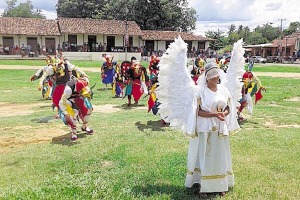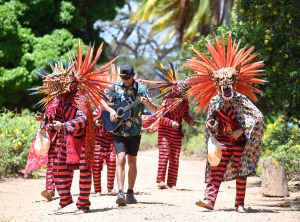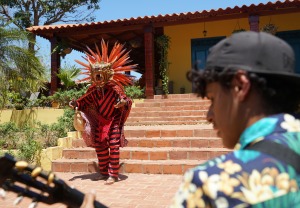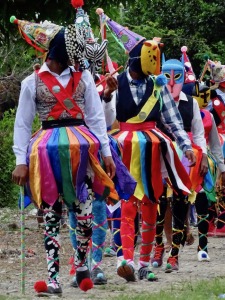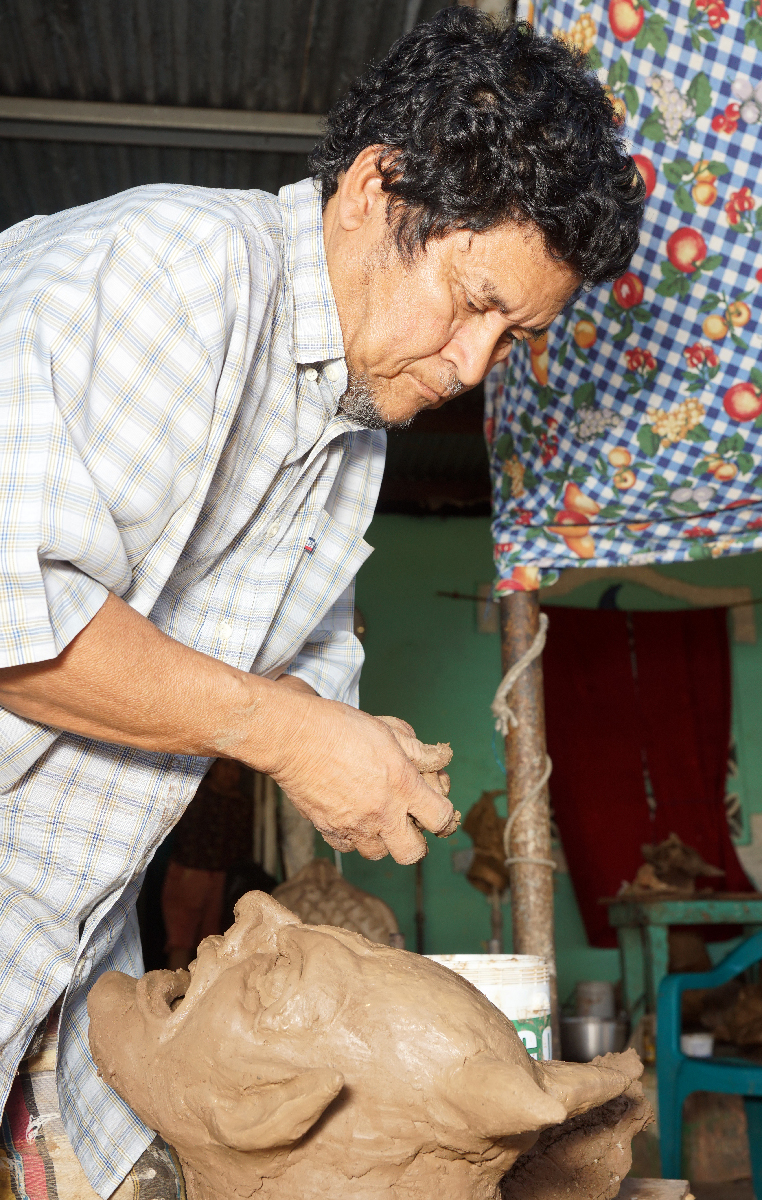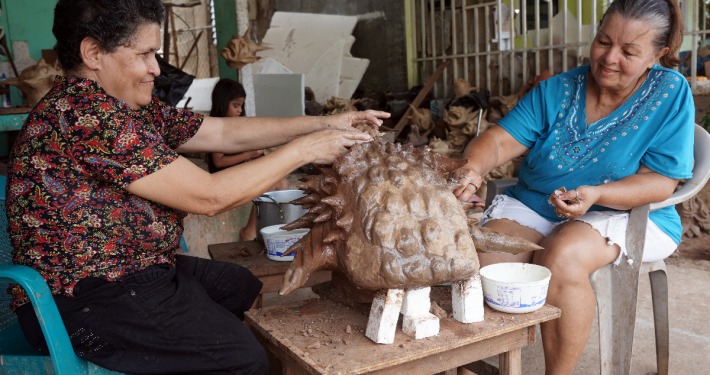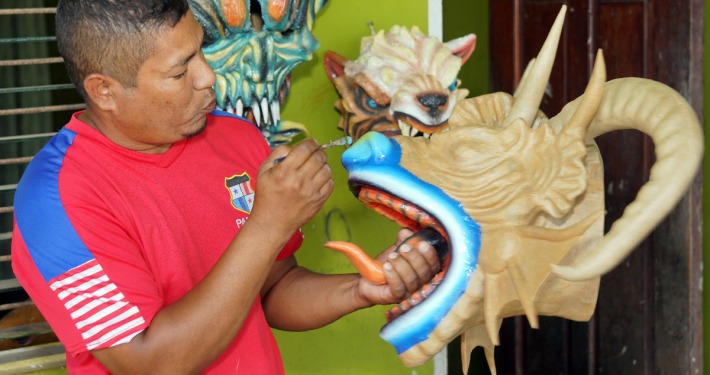Corpus Christi Celebrations in Panama
Many Catholic countries celebrate Corpus Christi with masked dances. Corpus Christi is a liturgical feast day, established in 1264, honoring the story of Jesus’ last supper, in which, according to Catholic beliefs, Jesus consigned his body and blood to the Eucharist. Celebrants attend Mass, often followed by processions and prayers. Many countries, especially in Europe, Latin America, and the Caribbean, add masked dances and parades.
In Panama, different towns have different traditions on Corpus Christi. In many, various forms of devils dance. In the Azuero Peninsula in particular, two kinds of masked dances are common: the diablicos sucios (dirty little devils) and the diablicos limpios (clean little devils). The diablicos limpios tell a story of the battle between good and evil. Although they wear elaborate paper maché masks, they also sport flowers in their headdress, white suits, and dance with a waistbaand made of colorful handkerchiefs and bells. They dance to an orchestra of flute, accordion and triangle. The diablicos limpios also wear small mirrors.
The dance of the diablicos limpios involves several specific characters, including El Grandiablo (the Great Devil), El Diablo Capitán (the Captain of Devils), La Diabla (the Deviless), and the Arcangel Michael. In the dance, the devils contend with Michael for the possession of a human soul.
The diablicos sucios, in contrast, tell no story. They are usually danced exclusively by men and boys, and they are accompanied by a guitarist. Their masks are similar to those of the diablicos limpios, very large and vividly frightening. In addition, they wear a huge headdress of macaw tail and wing feathers, and their suits are striped red and black, with a red cape. The origin of this style was that the suit originally was colored with alternating stripes of achiote (annatto) and charcoal.
As they dance, they click castanets. Some also carry a dried cow bladder and small whip, with which they beat the bladder for a drum-like sound.Generally, the dance first takes place in the street, from the church around the plaza, after which the dancers might appear in specific homes at the request of the resident for a private dance in exchange for food or money. The dancers sometimes chew on ginger to cleanse their bodies, but the appellation “dirty” comes from the foul smell of the cow bladder and the sweat from prolonged dancing in the tropical summer sun.
The clicking of the castanets is intended to simulate the gnashing of the devil’s teeth, in order to frighten the crowd into fearing the devil and behaving according to Catholic values. Around Corpus Christi, the diablicos sucios frequently dance for 8 hours at a time, making the dance a true endurance contest. The whip can also be used to fend off drunken members of the public.
Other parts of Panama dance different forms of diablos during Corpus Christi. In Colon, the dancers are known as diablos espejos (mirror devils). In Garachine, in the Darien Province, immigrants from Azuero have brought diablos espejos as well, although the costumes and dances have evolved slightly differently.
The Corpus Christi celebrations of Panama are unique and spectacular. The music, dancing, and garish masks and costumes set it apart from every other tradition of Latin America. The traditions are kept alive by dedicated organizers, dancers and musicians. If you should be fortunate enough to visit Panama in June, do not pass by the celebration!
To make a diablico sucio mask, a form is sculpted in clay. Most mask makers create a unique form for each mask.
Paper maché is layered over the form, then allowed to dry.
After wood teeth have been added, the mask is hand-painted in bright colors.
